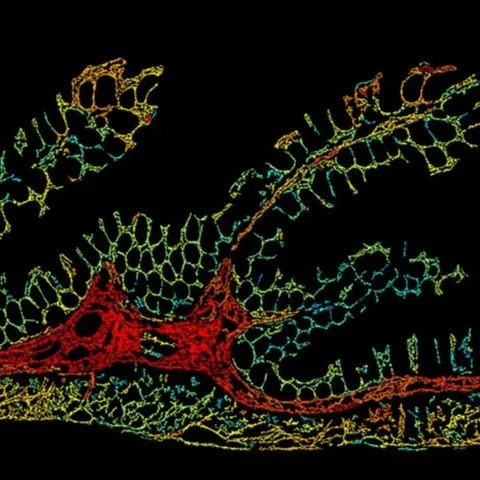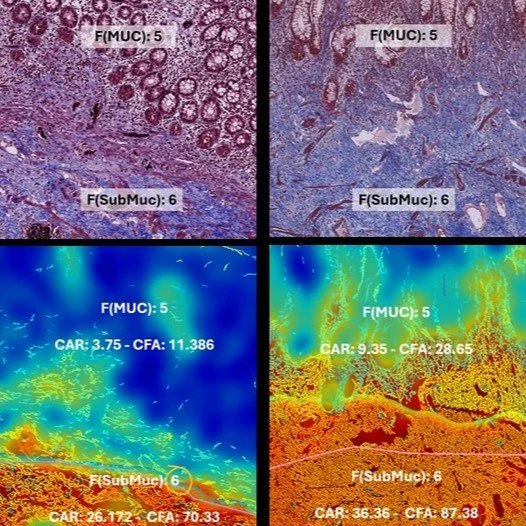Gastroenterology
Fibrosis in IBD remains an unmet medical need, with no approved antifibrotic therapies and limited tools to assess early tissue remodeling. As drug development shifts toward fibrosis-modifying strategies, FibroNest™ biomarkers provide a critical framework to quantify and monitor fibrotic changes in endoscopic biopsies, enabling objective, translational evaluation of treatment response.
Translational Bridge Between Preclinical and Clinical IBD Models
Quantitative fibrosis profiling in murine and human IBD models allows FibroNest™ to harmonize fibrosis assessment across species, enhancing translational predictivity of candidate therapies targeting intestinal remodeling.
Petitjean & Chen, Keystone Symposium: Fibrosis – Inflammation, Drivers, and Therapeutic Resolution 2024.
Fibroblast Heterogeneity in Fibrostenosing Crohn’s Disease
The ability to dissect cellular and matrix heterogeneity supports the identification of fibrosis endotypes and precision targeting of anti-fibrotic therapies in Crohn’s disease. Using FibroNest™ digital pathology, this study revealed distinct fibrotic phenotypes and fibroblast populations associated with fibrostenosis.
“Thrombospondin 2, matrix Gla protein and digital analysis identified distinct fibroblast populations in fibrostenosing Crohn’s disease” Miha Jerala et al., Scientific Reports 2024 Jun 14;14(1):13810.
Fibrosis BIOMARKERS in Inflammatory Bowel Disease
FibroNest™ provides continuous, quantitative biomarkers of fibrosis severity in ulcerative colitis, Inflammatory and fibro stenotic Crohn’s disease. By quantifying collagen structure, density, and fiber morphology across all the layers of the bowel wall, it delivers reproducible measures of fibrosis progression and remodeling across the continuum of IBD.
“Quantifying fibrosis in inflammatory bowel diseases – contribution of digital pathology.” Zidar et al. Digestive and Liver Disease, 2025 Oct;57(10):1938-1946.



